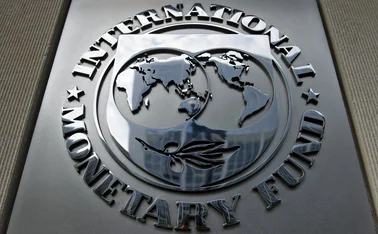
Platforms win small on Mifid day one
Some dealers stopped quoting bilaterally on smaller bond trades

One of the first concrete effects of Europe’s new trading and transparency rules has been to limit the choices available to buy-side firms when executing smaller trades.
On day one of the second Markets in Financial Instruments Directive, some banks refused to offer bond prices bilaterally as a way of avoiding the accompanying disclosure burden, directing clients to trading platforms instead.
Central Banking’s sister publication Risk.net spoke to three sources at banks classed as systematic internalisers (SIs) by Mifid II – those facing pre-trade disclosure requirements on smaller trades – who claim to have a blanket policy not to offer prices in such cases.
Most small bond trades are already executed on platforms, but some clients prefer to do this bilaterally. The banks claim this business is not lucrative enough to justify the cost of complying with the new regime, although one dealer says it has made an exception for derivatives, because corporate hedgers are unlikely to transition to electronic platforms.
“It would be unreasonable to expect all of those corporate customers to be on-venue, so we made the decision to build the infrastructure for pre-trade reporting for derivatives, regardless of the commercials,” says a regulatory strategist at a European investment bank.
Mifid II and its accompanying regulation, Mifir, entered into force across financial markets in the European Union today. Under the new rules, dealers designated as SIs and trading venues must publicly disclose quotes prior to executing. The aim is to level the playing field – other market participants should be able to see the quotes and execute at the same price.
It would be unreasonable to expect all of those corporate customers to be on-venue, so we made the decision to build the infrastructure for pre-trade reporting for derivatives, regardless of the commercials
A regulatory strategist at a European investment bank
To be caught by the rule, instruments must be classed as liquid by the European Securities and Markets Authority (Esma), available to trade on a trading venue, and be below one of two size thresholds: the size specific to the instrument threshold if the counterparty is taking principal risk; or the large-in-scale (LIS) threshold. If a trade does not meet those criteria then the requirement is waived.
Dealers can pass the obligation to publish quotes on to trading venues by only transacting instruments of a small size – below the SSTI threshold – on a platform.
The benefit to dealers of trading small-size instruments on-venue is they do not have to build the systems required to facilitate the publication of quotes, cutting some of the compliance costs.
“There is a cost in building the infrastructure needed to quote and this is not the business we make money out of, so we would rather it just went on to platform than have an infrastructure to support something that is not particularly profitable,” says the European investment bank’s regulatory strategist.
Side effects
Dealers’ refusal to support continued voice trading for smaller trades is not a surprise. In mid-2015, some banks were already warning it would be a side-effect of the new regime.
Some buy-side firms understand the banks’ choice. “We’ll help out the banks as much as possible, as the pre-trade reporting burden is on them. So we will trade on a venue and that makes life easy,” says a senior trader at a European pension fund asset manager.
Few instruments are subject to pre-trade transparency requirements. Esma only listed four over-the-counter interest rate swaps and 0.9% of bonds as liquid. The SSTI threshold is also seen by market participants as low; for example, the threshold for a 10-year euro interest rate swap is set at €15 million ($18 million) in notional.
“The SSTI is very small. For European government bonds, it’s €700,000. A corporate bond is €300,000,” says the head of rates sales at the European investment bank.
Dealers have warned, however, that if more instruments are captured as liquid and the size thresholds increase, it could have an impact on liquidity in European markets.
“It really depends on where the thresholds are drawn, what is classified as liquid and illiquid, and where the LIS or SSTI waivers are set for instruments that are liquid. It is then a matter of conjecture whether more transparency is helpful or harms liquidity,” says the regulatory strategist at a European investment bank.
Teething troubles
In September 2017, sources speaking to Risk.net expected lower volumes of trading due to anxieties surrounding the revised rules.
The first day of Mifid II has not been marked by any major disruption in trading. “In general, I think it was a very successful, low liquidity impact move for an industrywide project where everything went down to the wire,” says the head of rates trading at a global investment bank.
Four sources say the trading day was slower than usual with lower volumes.
“In general, implementation has gone fine and the markets seem quite muted. There is definitely some nervousness about who can trade what and what information has to be captured. People are feeling their way into it. It will be interesting to see whether the relative inactivity continues into the rest of January,” says a head of e-commerce at a European investment bank.
Obbe Kok, head of financial markets for the UK at ING, says: “We are seeing a light day of trading today – volumes of client orders are low. However, it is difficult to say if that is a direct result of Mifid II, where they might take a wait-and-see approach, or simply because the market is still in holiday mode this week. ING and, I expect, other major banks reduced positions ahead of the start of the new regulation to take into account the potential for short-term disruption.”
Sources also tell Risk.net they have experienced regular, but minor, glitches with their IT systems.
Additional reporting by Chris Davis.
This story first appeared in sister title Risk.net.
Only users who have a paid subscription or are part of a corporate subscription are able to print or copy content.
To access these options, along with all other subscription benefits, please contact info@centralbanking.com or view our subscription options here: http://subscriptions.centralbanking.com/subscribe
You are currently unable to print this content. Please contact info@centralbanking.com to find out more.
You are currently unable to copy this content. Please contact info@centralbanking.com to find out more.
Copyright Infopro Digital Limited. All rights reserved.
You may share this content using our article tools. Printing this content is for the sole use of the Authorised User (named subscriber), as outlined in our terms and conditions - https://www.infopro-insight.com/terms-conditions/insight-subscriptions/
If you would like to purchase additional rights please email info@centralbanking.com
Copyright Infopro Digital Limited. All rights reserved.
You may share this content using our article tools. Copying this content is for the sole use of the Authorised User (named subscriber), as outlined in our terms and conditions - https://www.infopro-insight.com/terms-conditions/insight-subscriptions/
If you would like to purchase additional rights please email info@centralbanking.com
Most read
- ECB staff speak out against changes to internal survey
- Central bank of the year: Central Bank of Brazil
- French president calls for expanded ECB mandate







